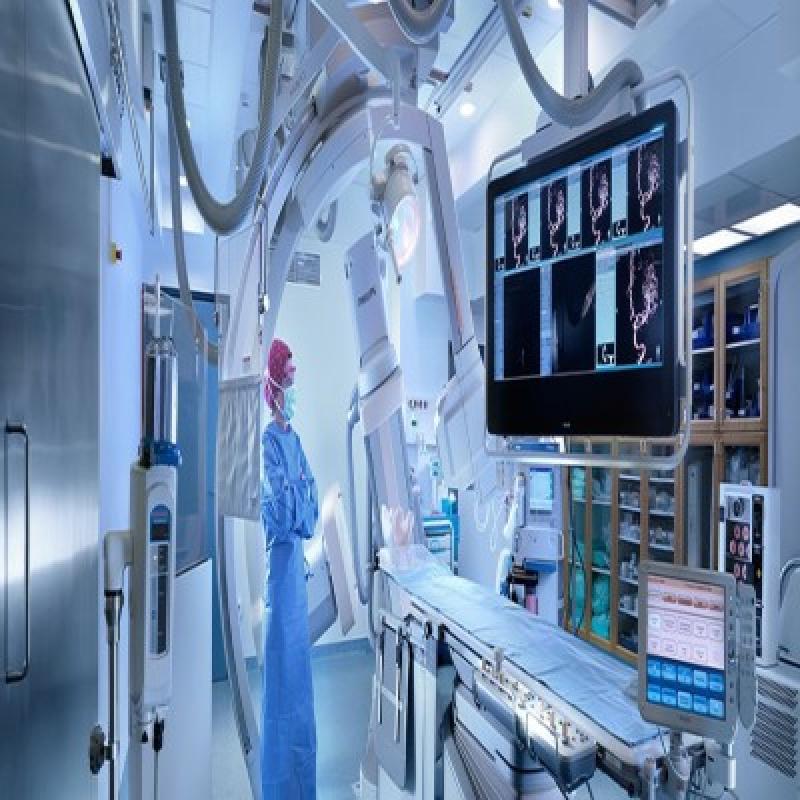Surgical navigation systems
Neuro-Navigation System, also known as surgical navigation systems, are computer-based technologies that help neurosurgeons visualize the locations of surgical instruments inside the patient's brain during complex procedures such as tumor resections and deep brain stimulations. These systems utilize specialized software to process medical images like CT and MRI scans and integrate them with real-time information from tracking devices attached to surgical tools and patient anatomy. By precisely tracking the position and orientation of surgical instruments, surgical navigation systems allow neurosurgeons to safely navigate inside the brain and reach deep-seated targets with great accuracy.
How Surgical navigation systems Work
Neuro-Navigation System is surgical navigation systems work by co-registering preoperative medical images with the actual position of surgical tools and anatomy during the procedure. First, CT or MRI scans of the patient's head are acquired before surgery. Then during surgery, the neurosurgeon rigidly attaches tracking sensors/markers to surgical tools, patient's head, and anatomical landmarks. These tracking devices communicate with the navigation computer system using electromagnetic waves or infrared light. The system processes the incoming positional data from these trackers and overlays it on the preoperative images, providing real-time visualization of surgical instruments inside the brain anatomy on computer monitors in the operating room. Some advanced systems also allow intraoperative imaging updates.
Components of Neuro-Navigation System
Main components of a typical surgical navigation systems include -
1. Tracking devices - Electromagnetic or optical trackers that attach to surgical tools and anatomy.
2. Registration module - Software that aligns preoperative images with the patient's physical space.
3. Workstation - Central computer system that runs navigation applications and displays reference images and trajectories.
4. Displays - High-resolution monitors for surgeons to view integrated images and positions.
5. Interface devices - Keyboards, mice, foot pedals etc. for navigating the system.
6. Surgical tools - Tools fitted with tracking arrays e.g. aspirators, stimulators, biopsy needles.
Applications of Neuro-Navigation in Surgery
Surgical navigation systems have numerous applications in modern neurosurgery due to their ability to precisely guide surgical tools. Some key applications include -
Brain Tumor Resection
Neuro-navigation helps surgeons locate and remove brain tumors more safely and completely by displaying tumor boundaries overlaid on medical images. It allows maximizing tumor removal while avoiding damage to vital nearby structures.
Deep Brain Stimulation (DBS) Surgery
Neuro-navigation is essential for precisely implanting stimulation electrodes in small, deep brain structures like subthalamic nucleus for treating conditions like Parkinson's disease. It improves targeting accuracy and clinical outcomes of DBS surgery.
Brain Biopsies
Image-guided navigation aids in safely obtaining tissue samples from lesions located in deep, eloquent or hard-to-reach areas of the brain under direct visualization. This reduces complications related to blind biopsies.
Vascular Neurosurgery
Neuro-navigation is beneficial for placing coils and clipping aneurysms with higher precision. It also assists in navigating cerebral vasculature during complicated procedures like arteriovenous malformation resections.
Stereotactic Procedures
Advantages of surgical navigation include assisting in burr hole placements and catheter/probe insertions with accuracy during stereotactic surgeries like deep brain stimulations, cyst aspirations, implantations etc.
Benefits of Using Neuro-Navigation System
In addition to precision and accuracy, neuro-navigation technology offers several benefits over conventional freehand techniques in neurosurgery:
- Improved safety by avoiding injury to critical structures near the surgical target. Navigation guidance prevents straying from the planned trajectory.
- Ability to monitor tool position throughout the procedure and make intraoperative adjustments if needed without relying only on anatomical landmarks.
- Allows non-line-of-sight surgeries by showing instruments behind bones or other obstruction on monitor display.
- Eliminates mental mapping and repeat imaging as navigation systems integrate all reference data in one place.
- Supports complex, multi-staged procedures involving return to previous targets by maintaining persistent records of all tool positions.
- Quantitative measurements that help characterize extent of resection, electrode location, lesion boundaries etc. for documentation.
- Ability to update reference images and plans intraoperatively with new imaging data for adapting to brain shift.
- Standardization of surgical approaches and reproducibility of results between different surgeons and hospitals.
Recent Advancements
Rapid advancements are happening in neuro-navigation field due to ongoing research and clinical adoption. Some new developments include next-gen optical tracking with no line-of-sight issues, augmented/mixed reality interfaces, intraoperative MRI-guided systems, robotic surgical assistants, and advanced brain-shift updating techniques. Cloud-based solutions for collaborative navigation across sites have also emerged. Upcoming technologies like artificial intelligence, 3D printing, and advanced biomaterials are further expanding applications of image-guided neurosurgery. With continued improvements in accuracy, ease-of-use and cost, surgical navigation systems are undoubtedly transforming modern treatment of various brain disorders.
For Deeper Insights, Find the Report in the Language that You want.
About Author:
Vaagisha brings over three years of expertise as a content editor in the market research domain. Originally a creative writer, she discovered her passion for editing, combining her flair for writing with a meticulous eye for detail. Her ability to craft and refine compelling content makes her an invaluable asset in delivering polished and engaging write-ups.
(LinkedIn: https://www.linkedin.com/in/vaagisha-singh-8080b91)
